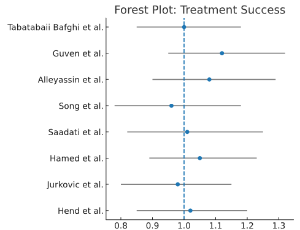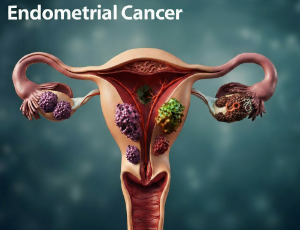Loading
Archives of Obstetrics and Gynaecology
ISSN: 2692-787X
Latest Articles
Bacterial Profile and Drug Resistance Patterns among Pregnant Women with Bacteriuria in East Africa: A Systematic Review and Meta Analysis
Molla Getie Mehari , Mekdes Molla
Due mostly to the growth of multidrug resistant infections, antimicrobial resistance (AMR) has limited the arsenal of medical professionals against infectious diseases on a global scale. Thus, the purpose of this systematic review and meta-analysis is to present the pooled prevalence, bacterial profile, and current trend of antibiotic resistance in pregnant women who have significant bacteriuria in East Africa.
Arch Obstet Gynecol, 2025, Volume 6, Issue 2, p66-81 | DOI: 10.33696/Gynaecology.6.089
The Effectiveness of Methotrexate in Hemodynamically Stable Women with Tubal Ectopic Pregnancy: A Systematic Review and Meta-Analysis of Randomized Controlled Trials
Hossam Abdelfatah Mansour , Ruqayyah Ali Ahmed , Ahmed Mohamed , Ekramy A. Mohamed
Background: Ectopic pregnancy (EP) is a leading cause of acute abdominal pain in gynecology. Most women with tubal EP present hemodynamically stable, making non-surgical therapy a viable option. This study aimed to evaluate the effectiveness and safety of methotrexate (MTX) regimens in this population. Methods: We performed a systematic review and meta-analysis of randomized controlled trials (RCTs). A comprehensive search of PubMed, Cochrane Library, Embase, LILACS, SciELO, and CINAHL was conducted from database inception to April 2025.
Arch Obstet Gynecol, 2025, Volume 6, Issue 2, p55-65 | DOI: 10.33696/Gynaecology.6.087
Comprehensive Management of Endometriosis: Implementation from Research to Clinical Practice
Elliot M. Levine , Carlos M. Fernandez , Teresa Tam
Appendiceal endometriosis (AE) represents a clinically significant yet frequently overlooked manifestation of endometriosis that may contribute to persistent symptoms and suboptimal treatment outcomes. Multiple comprehensive reviews demonstrate that appendiceal involvement occurs in a notable percentage of women with endometriosis and can present with distinctive symptom patterns.
Arch Obstet Gynecol, 2025, Volume 6, Issue 2, p82-84 | DOI: 10.33696/Gynaecology.6.090
Research Progress of Molecular Classification Guiding Targeted Therapy Combined with Fertility-Preserving Treatment for Endometrial Cancer
Xiyao Ma , Yuanjing Hu
In recent years, the incidence of endometrial cancer has continued to increase and tends to be younger. An increasing number of young patients wish to preserve reproductive function during treatment. Although progestin therapy has a high remission rate, some patients experience hormone resistance, recurrence, or even disease progression, making this traditional treatment unsuitable for everyone.
Arch Obstet Gynecol, 2025, Volume 6, Issue 2, p85-90 | DOI: 10.33696/Gynaecology.6.091
Shared Experiences and Reflections on Sexual and Reproductive Health Rights
Maheshor Kaphle , Nirmala Regmi
Male involvement in sexual and reproductive health (SRH) is increasingly recognized as a crucial factor for improving maternal, neonatal, and family well-being. This paper shares personal, peer, and community experiences from Nepal, highlighting both the benefits and barriers to men’s engagement in SRH.
Arch Obstet Gynecol, 2025, Volume 6, Issue 2, p91-94 | DOI: 10.33696/Gynaecology.6.092
About Scientific Archives
Scientific Archives is a global publisher initiated with the mission of ensuring equal opportunity for accessing science to research community all over the world. Spreading research findings with great relevance to all channels without any barrier is our goal. We want to overcome the challenges of Open Access with ensured quality and transparency.
